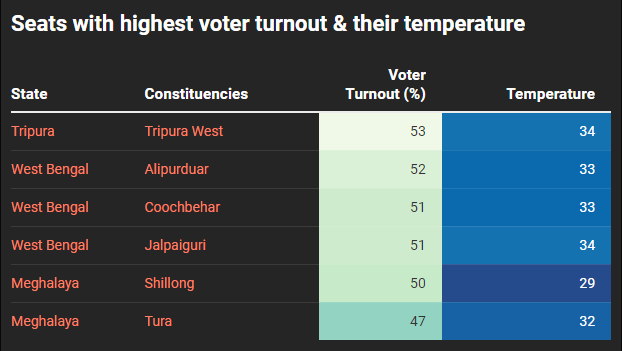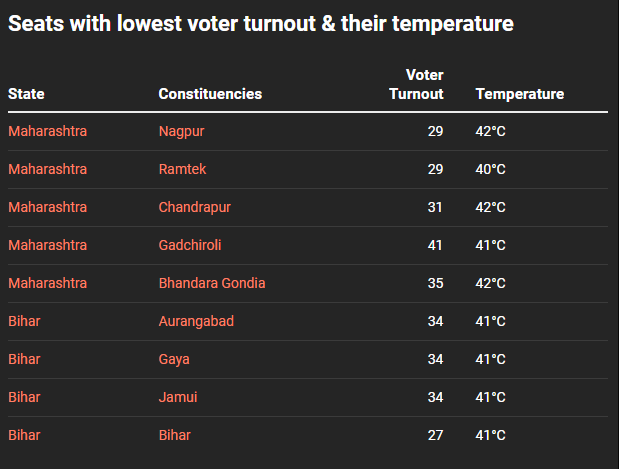Lok Sabha Election 2024: Heat Wave Matters! Cooler Seats Record Higher Turnout
By tejas1144 | Published: April 19, 2024 03:48 PM2024-04-19T15:48:02+5:302024-04-19T15:50:13+5:30
Since the 1999 General Election to Lok Sabha, held between September 5 and October 3, all parliamentary elections in ...

Lok Sabha Election 2024: Heat Wave Matters! Cooler Seats Record Higher Turnout
Since the 1999 General Election to Lok Sabha, held between September 5 and October 3, all parliamentary elections in India have been conducted during the summer months. The Atal Bihari Vajpayee-led NDA, buoyed by the 'India Shining' momentum, opted for early elections, thus initiating India’s tradition of summer elections.
During the ongoing Lok Sabha elections in 2024, there have been repeated discussions about shifting the general elections to the winter months. This is due to the high temperatures experienced across the country during the April to May period, with many regions even enduring heatwaves.
As the first phase of polling for the 18th Lok Sabha commenced on Friday morning, 102 seats across 21 states and Union Territories are undergoing voting. Early voter turnout trends indicate that states and constituencies with lower temperatures are witnessing higher voter participation compared to those experiencing hotter weather.
According to turnout trends as of 1 PM, Tripura leads among all states with 53.04% voting. The temperature in Tripura West, the sole constituency voting in Tripura, was 34°C. West Bengal recorded the second-highest turnout with 50.96%. Temperatures in the three constituencies (Alipurduar, Coochbehar, Jalpaiguri) voting in West Bengal at 1 PM were 33°C, 33°C, and 34°C, respectively. Similarly, all seats in the northeastern states, where temperatures were lower, witnessed better voter turnout. Meghalaya, with 48.91% voter turnout by 1 PM, recorded temperatures of 29°C and 32°C in its two constituencies, Shillong and Tura, respectively.
States like Maharashtra and Bihar are closely watched in this election as they could significantly impact its outcome. However, Maharashtra reported a lower turnout of 32.36% by 1 PM. Among all seats, Nagpur and Ramtek recorded the lowest turnouts at 28.75% and 28.73%, respectively, with temperatures reaching 41°C and 40°C. Temperatures in the other three constituencies (Chandrapur, Gadchiroli, and Bhandara-Gondia) were all above 40°C.
In Bihar, the voter turnout by 1 PM stood at 32.41%. Temperatures in Bihar's four constituencies, namely Aurangabad, Gaya, Jamui, and Nawada, were all at 41°C.
General trends across these constituencies suggest that the intense heat may be a significant factor contributing to lower voter turnout in most states during this election. Conversely, hilly and northeastern states, with relatively cooler temperatures, could witness higher voter participation.
Open in app
